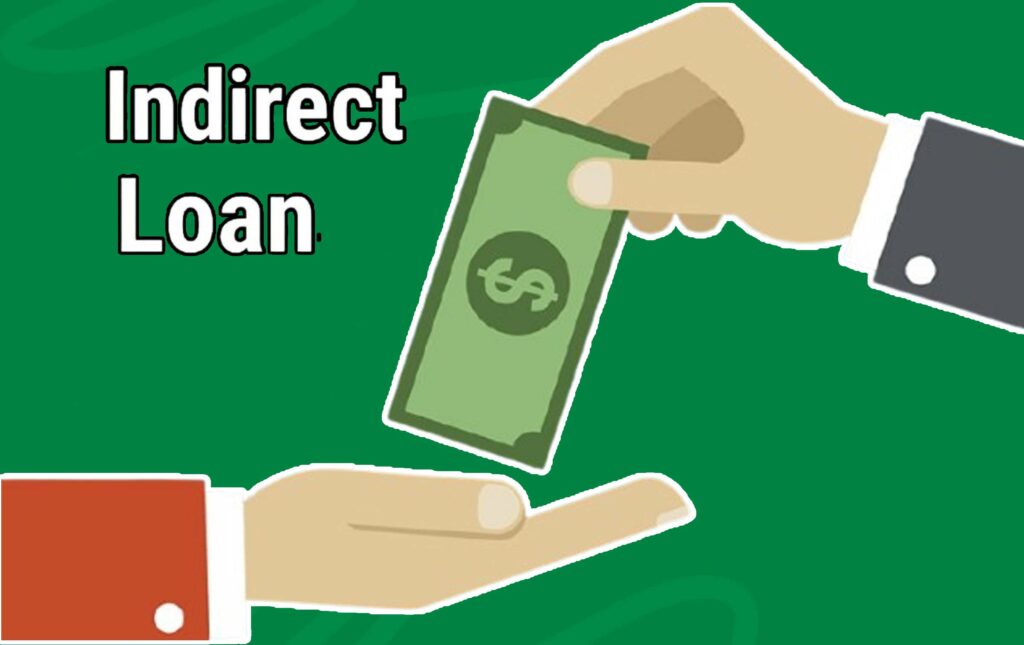An indirect loan is a type of installment loan wherebythe lender and the borrower do not have any direct relationship. Instead, the borrower goes through a third party to apply for a loan, with an intermediary’s help. A good example of an indirect loan happens in the auto industry. The dealership facilitates auto loans through its third-party lenders network.

This enables borrowers to get a car loan approval at that location instead of ushering documents between the dealership and their bank. An indirect loan tends to be more comfortable and easier for borrowers. However, it may come with higher rates. And since the lender has little control over the lending process, this type of loan tends to be risky for lenders.
How Does an Indirect Loan Work?
In layman’s terms, an indirect loan is a type of installment loan where the lender and borrower don’t directly interact. There are two different ways this can happen: a company offers a loan to a consumer and then sells it to a bank, or the company accepts a loan application from the consumer for the bank to handle and approve it.
Just like I have mentioned above, a good common example is an auto loan from a car dealership. When you apply for an auto loan at the dealership, you will have to submit a credit application. The dealership will then send your application to its network of lenders. This gives you lots of options to choose from with different terms and interest rates.
Keep in mind that the interest rates you will get will be higher than what you get directly from a credit union or bank. Furthermore, the dealership might then send your application to a bank. If the dealership sets up the loan, it will sell it to other lenders, like banks or investors. This new lender will then manage the loan and collect the monthly payments from the borrower.
Indirect Loans: Pros and Cons
To understand more about this indirect financing, below are some of the advantages and disadvantages. Check them out.
Pros:
- This type of loan is easier and more convenient for the borrowers. For example, the indirect car loan allows the borrowers to purchase and finance a vehicle at the same time.
- It offers more chances for lenders since they get access to a very wide pool of borrowers.
Cons
- It is very risky for lenders, so it usually comes with very high interest rates.
- Dealerships are not mandated to offer you the best rate you can afford or qualify for.
- Since the lender does not have direct interaction with the borrower, they don’t have much control over the loan process.
- It tends to have very high delinquency rates.
It is very advisable that you explore different options for applying for this loan. Because it tends to put lenders at more risk, it comes with very high interest rates. Ensure that there are no other options you can qualify for before considering this financing option.
Direct Loans vs. Indirect Loans
| Direct Lending | Indirect Lending |
| Lenders do have direct interactions with the borrowers | An intermediary is in between the lender and borrower transaction |
| Less risk for lenders | It is more riskier for lenders |
| The lender has more power over the application and transaction process | The lender do not have much power as the borrower have relationship with the intermediary. |
| For borrowers, the procedure may take more step with the lender and the company or dealer | For borrowers, the process is very convenient because the only deal with just one party. |
When applying for an installment loan, there are two options available for you: direct loan or indirect loan.
For a direct loan, you will have to apply directly with a bank or credit union. You’ll typically work with a loan officer who will help you in getting the loan approved. This is a good option if you have a good credit score, as you’ll get the affordable rates and terms. It is very safe for the lenders since they have more power over the transaction process and can verify your information themselves.
Overall, an indirect loan involves applying through a third-party lender who acts as an intermediary. This option can be expensive for borrowers and riskier for lenders. However, it might be a better option for some people depending on their situations.



